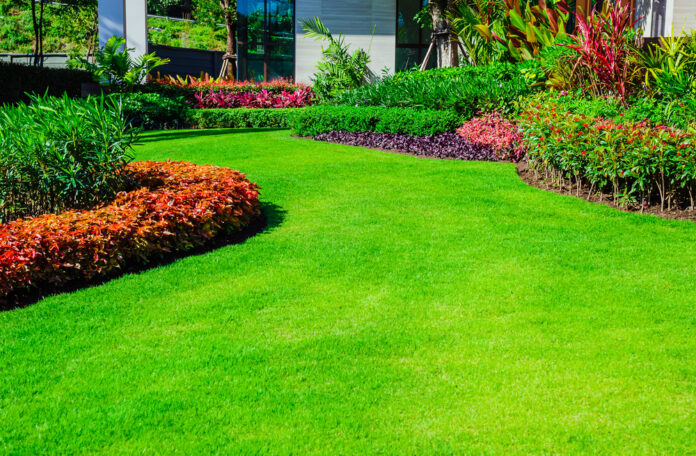In recent years, artificial grass has surged in popularity, leaving many people wondering whether they should take the leap and abolish their garden’s natural lawn. From artificial grass in Braintree to Sydney (click here to learn more), synthetic lawn is sweeping the globe, and everyone wants to know why. Is artificial grass more affordable over time? Is the installation process tedious? Does it require maintenance? These are just a handful of the many questions that keen gardeners have about synthetic grass. So, what factors do you need to consider when contemplating artificial grass?
The Cost
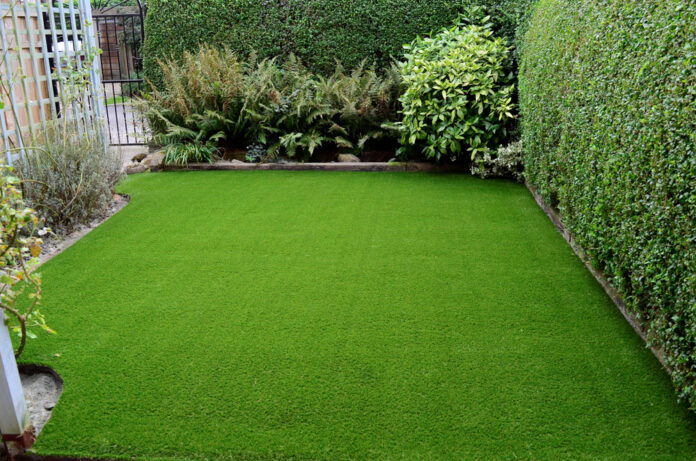
The subject at the forefront of everyone’s mind is the cost of synthetic lawn compared to the real thing. Despite this, a large upfront cost is inevitable, and this won’t be the only fee that you have to pay in the long run. With any lawn solution, it won’t remain attractive in the absence of proper care.
Natural grass will either grow from seeds or sod; typically seeds will be cheaper than sod, but sod will produce results almost instantly. Since natural grass is a living thing, you’ll need to keep on top of feeding, reseeding, weeding, and mowing. Without this, your lawn will either overgrow or die, looking unkempt and brown.
Though the initial installation cost of artificial grass will blow the planting costs of natural grass out of the water, you typically won’t have to fork out for much maintenance after that. Usually, you’ll only need to brush or rinse it on a weekly basis, meaning that natural lawn will eventually exceed the cost of synthetic grass.
The Installation Process
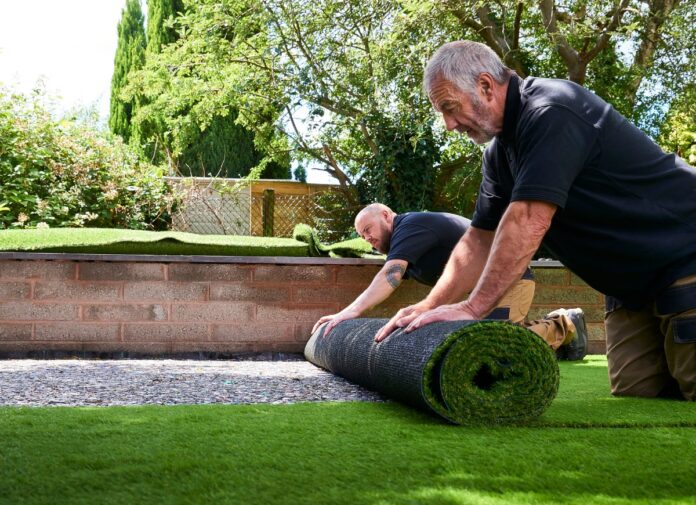
After the cost, the next thing that everyone worries about is the time and effort that comes with the installation. When it comes to natural grass from scratch, you’ll need to go through preparing the soil, planting the seeds, and nurturing the grass. This method will take a long time to come into effect but, when done right, it’s an extremely reliable solution.
As an alternative to seed, you can use sod, which involves rolling out turf. However, if you don’t properly prepare the ground, this will prove ineffective. Additionally, natural grass shouldn’t be walked on until it’s been mowed three times as this will stunt the growth.
On the other hand, synthetic grass has hardly any needs, but the ground will need to be prepared in a similar fashion. Although, once the turf is laid, it can be used immediately and will remain for years on end.
The Maintenance
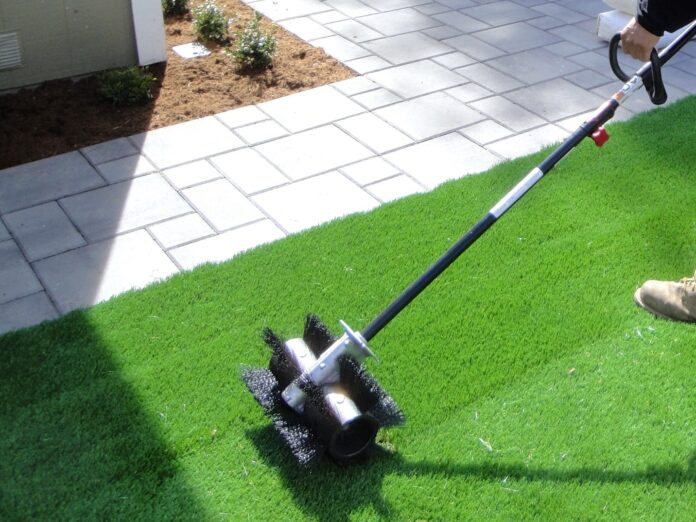
Quite simply, artificial grass requires a lot less maintenance than its natural counterpart. With natural grass, you’ll have to invest a lot of time, effort, and money into achieving an attractive and luscious finish. Several hours’ worth of weekly maintenance will need to be put into a natural lawn, and this is a time that a lot of people simply don’t have.
However, artificial grass doesn’t require water or nutrients to thrive, meaning that maintenance is minimal. Despite this, you’ll need to ensure that debris is not trapped in the fibers as this can result in unpleasant odors and stains. Therefore, regular brushing and rinsing are necessary to keep the synthetic lawns in pristine condition.
The Feeling
Generally speaking, real grass looks and feels better. The purpose of synthetic lawns is to mimic the real thing as closely as possible, meaning that natural lawn is the desirable outcome as far as aesthetics are concerned. Regardless of this, real grass is only superior in appearance when it’s well maintained, otherwise it looks dry or wilted.
The color and texture of the real grass are affected by external factors and the height of the blades and can sometimes not look so pretty.
On the other hand, artificial grass is always picture-perfect and photo-ready. Throughout the year, the grass seem to be the same height and color. Artificial grass is a popular choice for individuals who want a perfect front yard all year.
Safety
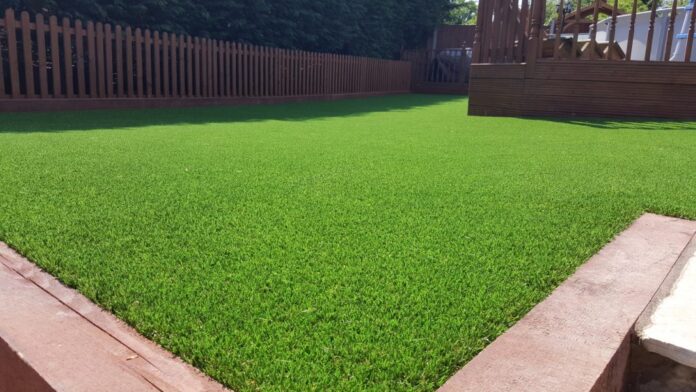
You never have to apply dangerous substances with artificial grass. This makes it completely safe to play on for both you and your children. This is also why artificial grass is becoming more popular in public play places. A real lawn is likewise a safe alternative if it has not been exposed to any harmful chemicals or pesticides.
Longevity
Another important factor to consider is the longevity of your grass. For many individuals, having a lawn that always looks nice and lasts a long time is crucial. You may save money and time by having a more durable lawn. The condition of your lawn can be affected by a variety of factors, including the scorching heat of the sun, weeds, bugs, and children or pets moving around on it. Synthetic turf, as you might expect, is far more durable than natural grass. It’s less susceptible to weeds, pests, or temperature, light, and moisture variations, and it’s less easily trampled. Drought won’t kill an artificial lawn, and it’s less susceptible to the same factors that kill genuine grass.
Imitation grass should last for years and years, and it doesn’t require nearly as much maintenance.
Impact on the Environment
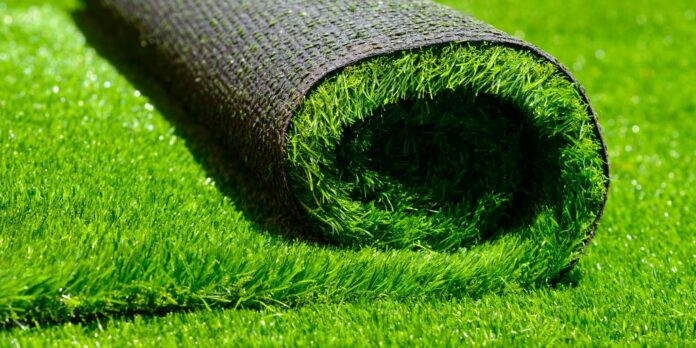
The environmental impact of artificial grass or natural grass fields is critical. After all, our quality of life is dependent on the environment. Both species of grass can be harmful and beneficial in different ways.
Artificial grass is beneficial since it conserves water. One of the most essential natural resources we have is water. It is vital that as much of it as possible be saved. The disadvantages of synthetic grass include pollution caused by manufacturing and the fact that it is not always biodegradable.
Because it is a living entity, natural grass nourishes our ecosystem. By delivering oxygen, filtering pollution, and absorbing heat, real grass benefits the ecology. Natural grass has certain disadvantages in addition to these advantages. Pesticides are frequently sprayed on real grass, which migrates with runoff water and contaminates water systems.
Ultimately, whether real or artificial grass is more suitable comes down to your garden’s requirements. You must weigh up the pros and cons of your individual space to reach a verdict.

